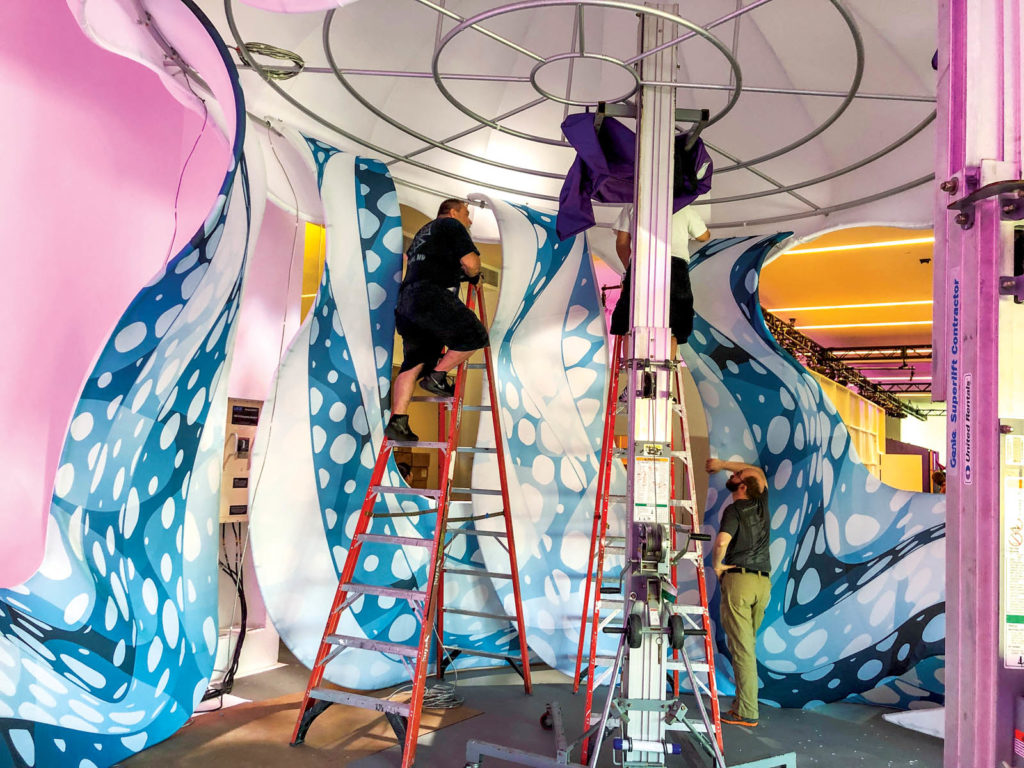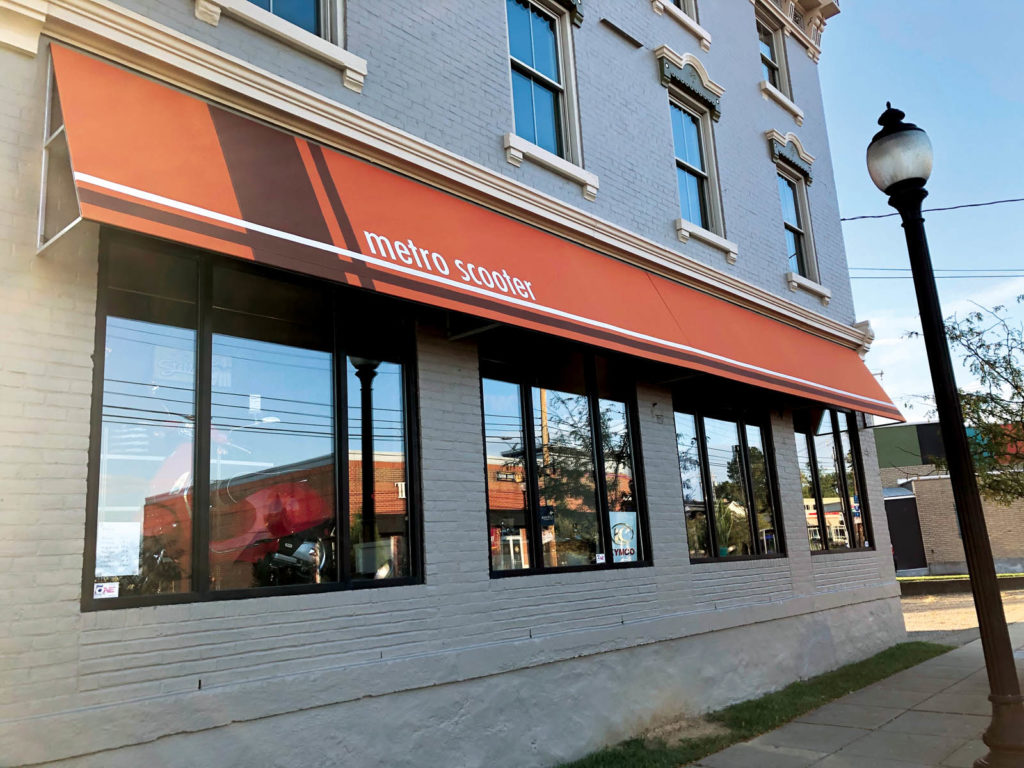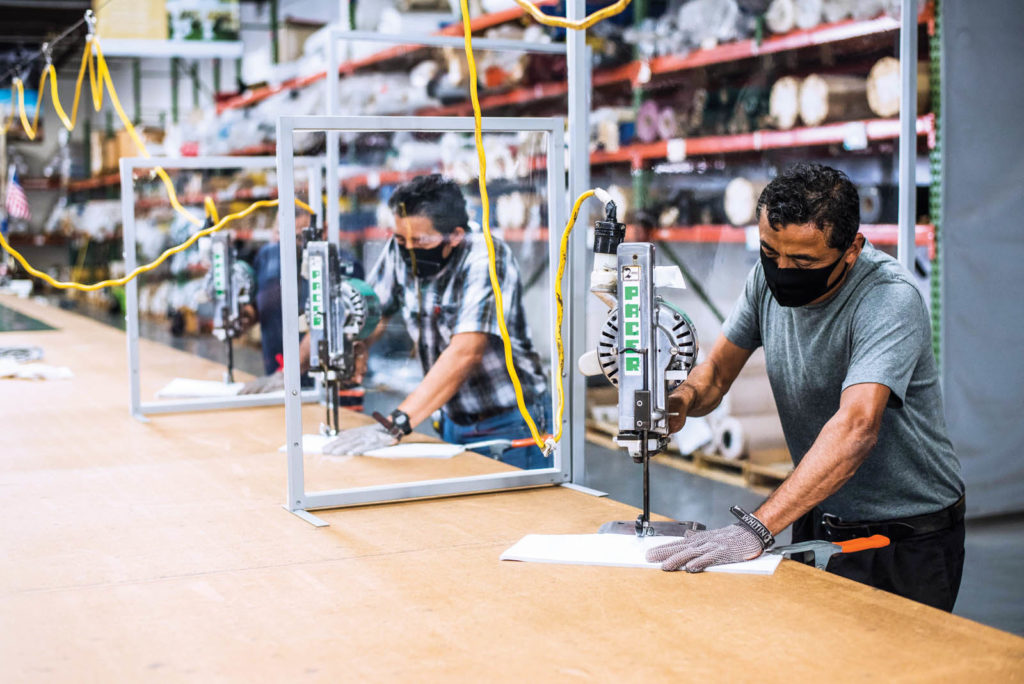
When Tim Cook was named to replace Steve Jobs at the helm of Apple Inc. a decade ago, his ascension was largely attributed to his skill at managing the company’s supply chain—even though most people outside the business world at that time were fuzzy about just what a supply chain was.
But Apple knew how important a well-managed supply chain was then, and today there are few Americans who haven’t learned what it means—in large part because in the COVID era, it has meant that the new sofa they want is going to take nine months to deliver instead of two weeks, or that the new car they want has skyrocketed in price.
There are few goods being produced for either commercial or consumer use that have not been hit by disruptions in the supply chain, and that includes in the fabric business.
“It’s kind of a frightening world out there,” says Cindy Thompson, founder and president of Transformit, Inc., a design/build studio in Gorham, Maine.
Supply and staffing issues go hand in hand
The irony of the situation, according to many fabricators, is that business is good, in some cases surprisingly so given the early apocalyptic predictions of the COVID landscape. But the difficulty in getting the goods they need—along with the problem of finding enough qualified help—presents a daily challenge for fabricators.
“Right now, we’re really busy, which is unbelievable because we’re usually not super busy late in the year,” says Thompson. “I’ve kept my core team employed throughout the pandemic, and we are working at capacity, but I wouldn’t dare add people now, even if I could get them.”
Fabric that used to come within a few days now takes months, according to Thompson. There are sometimes alternatives that can save time, she says, “but we go through a lot of anxiety about patterns and stuff because we can’t get our usual fabrics.”
The uncertainty about transportation spreads across the business, says Thompson. “If we’re sending things for events, we put them on dedicated trucks that we know are going to get there, which unfortunately costs the client more money.”
“Supply and demand today is not very much supply and a whole lot of demand,” she says.
“Business is good and bad,” says Peter Weingartner, president of Queen City Awning in Cincinnati, Ohio, a third-generation family business that has been in operation for 130 years. “As far as work goes, we’ve got plenty of that. “But getting the supplies in to do it, that’s been a challenge.”
Each year since the beginning of the pandemic “has morphed into a different problem,” according to Weingartner.

Caught off guard
For example, he says, in 2020 a lot of domestic suppliers of retractable awnings and screens “were kind of caught off guard, with people staying home and ordering a lot of these products, so maybe they didn’t have enough inventory. In 2021, they bulked up orders and then you got the whole shipping problem.”
Alex Kouzmanoff, president of Aztec Tents in Torrance, Calif., says supply chain issues for his manufacturing business “have been minimal,” although lead times “have been much longer than they used to be.”
“On some levels there are shortages, like in wheels and tires for tent jacks,” he explains. “Those are support items for what we sell, and it does impact us, but is it really detrimental to the overall business? No.”
“These are terrible issues, not just for me, I know,” says Christian Cain, president of Camel Custom Canvas Shop in Knoxville, Tenn. “I have problems with fabrics and aluminum tubing for tent frames. But I know a builder whose work ground to a halt because his grout was backordered. And if it’s not grout, it’s kitchen equipment, or elevators or overhead doors. It’s a royal mess out there.”

Thompson expects supply chain difficulties to continue as long as the U.S. continues to remain so dependent on imports.
“Hardly any of the fabrics are made in the U.S. anymore,” she says. “Aluminum is local, mostly recycled, but there are not enough people to work it, so even aluminum is hard to get.
“This is a wake-up call, I think,” she adds. “We’d better start making things in the U.S. and stop depending so much on other countries. We’ve lost our manufacturing in the U.S. and if we can’t get raw goods to make things from, that’s a big problem.”
“In time, it will all settle back down and stabilize,” says Kouzmanoff. “But when that is—we just don’t know.”
Jeff Moravec is a freelance writer based in Brooklyn Park, Minn.
SIDEBAR: Staffing still an issue, but a ‘silver lining’?
Business is going very well at Camel Custom Canvas Shop in Knoxville, Tenn., according to president Christian Cain. “But equally you have the feeling and the appearance of being even busier than you are. That’s all about not having enough staff. I can’t find workers.”
The main article here is focused on issues related to the supply chain, but when talking with fabricators, they have a hard time discussing supply chain issues without including the impact labor shortages are having on their businesses. And, of course when one issue is that there are not enough workers to unload containers, the subjects are intertwined.
“By and large I stay on top of my deadlines, I pride myself on that,” says Cain. “But if you don’t have the materials you can’t hit the deadline, and you can’t do it if you don’t have enough workers.”
In what Cain calls “a really depressing silver lining,” he says the difficulty getting materials makes the labor shortage a little less onerous. “I have fabric backordered for more than two months. If I did have those materials, I’m spread so thin with a lack of workers, I couldn’t do it. There’s only so much overtime you can put in.”
“I’ve always said this is not a job, it’s an adventure,” says Cain. “But now it’s like juggling balls and spinning plates at the same time. It’s not for the faint of heart.”
 TEXTILES.ORG
TEXTILES.ORG


